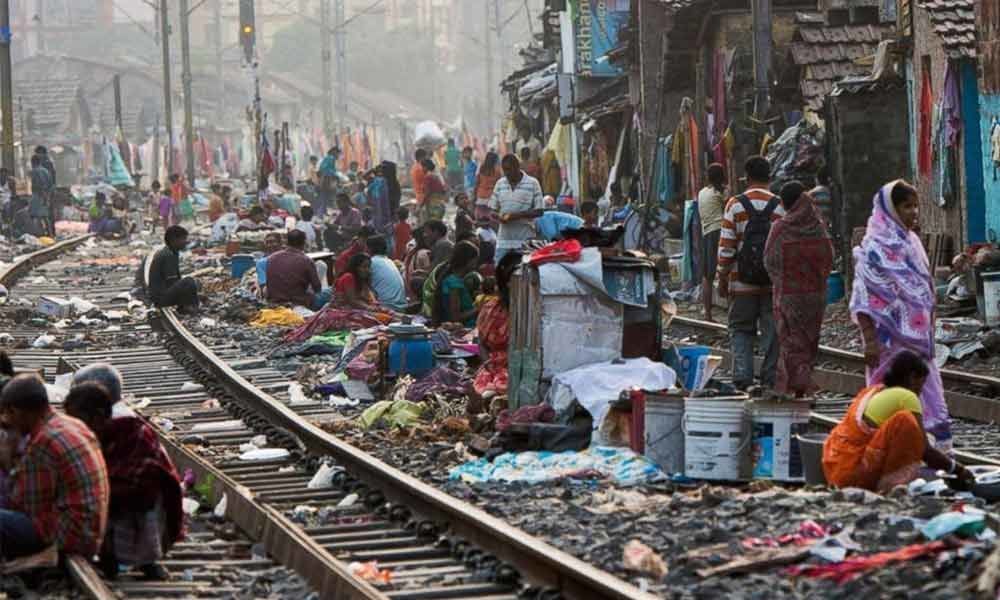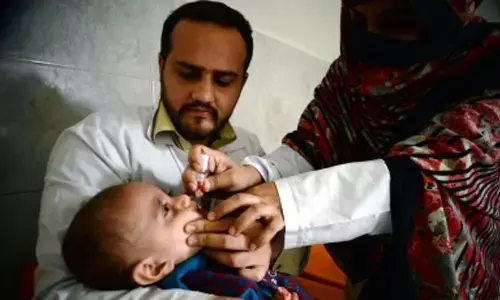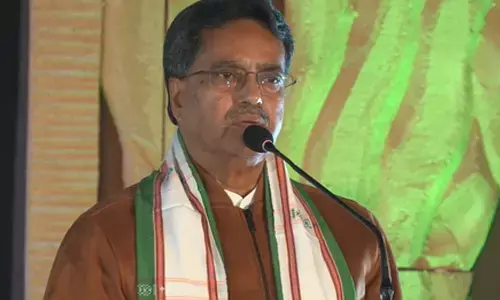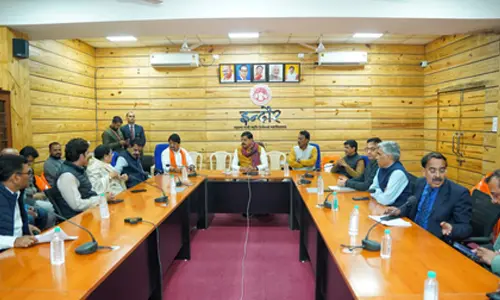Destined to remain poor forever

Here’s how poverty, political myopia and ecological degradation are inter-related
On April 6, 2019, Prime Minister Narendra Modi arguably made his first mention of the word "poverty" during the current poll campaign. And in a huge symbolic gesture, he made this mention in a public rally in Sonepur in Odisha, one of India's poorest districts.
By this time, other political parties — eminently the Indian National Congress — had already mentioned the word.
In 2017, Modi promised to eradicate poverty by 2022, as part of his "New India" agenda. Expectedly, Modi said in this public meeting: "The Congress has all along been reaping political benefits by employing poverty as a major weapon. Poverty cannot be eradicated as long as the Congress exists." And he asked voters to throw away the Congress, so poverty would be automatically eradicated.
Some 50 years ago, the late Prime Minister Indira Gandhi gave that now famous "Garibi Hatao" call in the neighbouring areas.
On the same day, Modi's Finance Minister Arun Jaitley also spoke on poverty eradication while addressing students in a college in Delhi. "India may become the third-largest economy by 2030 and poverty will fall below 10 per cent by 2025," said Jaitley.
According to the 2011 Census, nearly 22 per cent of India's population is poor. Jaitley "assumed" that this rate was already 17 per cent in 2019. In 2004-05, this was 37 per cent.
The poverty line for the 2011 figure was Rs 816/capita/month (for rural) expenditure. Or a person earning above Rs 27 per day will be considered above the poverty line.
But this logical and also sometimes data-based estimation of poverty eradication gets punctured by many shocking layers of situations that make one Indian poor or rich.
Modi should have asked in Sonepur the question: why some pockets in the country always remain poor? This district has featured in the poorest district list of the country since independence despite being in a resource- and water-rich area.
Or why irrespective of political parties in power, poverty is chronic in some places. Like say, the Dangs in Gujarat where his Bharatiya Janata Party has been in power for last 24 years.
With all probability, poverty might not be eradicated from India, not in 2022 certainly. The next generation of the current poor Indians has high probability of remaining poor as well.
First, let's understand the nature of poverty in India. What economists and politicians define as poverty is basically income poverty. But most of India's poor reside in ecologically rich areas and draw a significant portion of their earning from these resources. So, ecological degradation has an impact on level of income, thus, on poverty level.
Second, as the former Rural Development Secretary NC Saxena used to say, "Poverty in India behaves like the stock market. On some days thousands fall below the poverty line and some days thousands rise above the poverty line."
This is where the challenge is to retain people above poverty line. And what are the reasons for people to fall below poverty line: a shock of a disaster-like drought, a healing incident warranting heavy expenditure and lack of consistent economic opportunities.
Currently, for example, 300 districts are under severe drought. Most of them might have fallen below the poverty line. Now, just imagine, what if the same districts again face a drought next year. Poverty would be perpetuated. This is called chronic poverty and under its grips are districts like Sonepur.
Lack of access to resources like forests and social discrimination have set in the dreaded chronic poverty among India's socially marginalised groups, ironically the target of poverty eradication programmes since last 70 years.
It is sure now that close to 111 million Indians, or a bit more than 41 per cent of the current poor population in India, would remain poor forever. The future has more shocks: studies show that poverty is getting transmitted to the next generation.
This means a vicious cycle of poverty for close to 10 per cent of India's population.
But going by seminal research works of the Chronic Poverty Research Centre (CPRC), an international association of researchers and academicians, poverty is becoming chronic and hereditary in India, at least for a sizeable population.
There are a series of surveys, mostly not discussed or debated in popular forums, which have been pointing out that a significant number of the poor in India are not able to escape the poverty trap, and most of these chronic poor belong to socially disadvantaged sections like the Scheduled Castes and Schedule Tribes.
Going by the National Council of Applied Economic Research's Human Development Survey, during 2005-2012, 41.3 per cent of India's poor (both rural and urban) remained poor. Recently, the World Bank also reported that during 2005-2011, 40 per cent of the poor remained poor. India has 269 million poor and this is the estimate that government has accepted.
So, the number of chronic poor, according to this estimate, is 111 million. "Our study, in the form of more than 30 papers, shows that it would be very difficult for the chronic poor to escape the trap," says Aasha Kapur Mehta, an economist with Indian Institution of Public Administration.
A three-decade-long exercise of tracking poor households in rural India by the CPRC claims that those who are chronically poor may pass on poverty to their next generation. What's more, people residing in tribal and forested areas are likely to remain poor forever, fomenting violent conflicts in future. Most of India's forested districts are already dens of Maoists.
The survey by CPRC explains the "two Indias". "Why do some people remain poor for a longer period of time? Why do poor areas remain poor forever? These are the questions answered by the survey," says Mehta, who led CPRC in India.
The survey followed about 3,000 households for almost 30 years across the country. It adopted a three-pronged approach to poverty: what drives poverty, what retains poverty and what causes exit from poverty.
CPRC has published 32 research papers explaining various aspects of poverty in India. It defines the chronic poor as people who remain poor through their lifetime.
Analysis of the papers shows that at least 50 per cent of India's poor are chronic poor. The survey identified 15 regions spread over six States — Odisha, Madhya Pradesh, Uttar Pradesh, Chhattisgarh, Bihar and Telangana — where poverty is getting concentrated and chronic.
"Persistent backwardness and inequality have led to concentration of poverty in certain parts of India. So, there is a geographical dimension to poverty," says the CPRC report.
As per the survey, people in tribal and forested or degraded forest regions are more likely to remain poor forever. Nine of the 15 identified regions are forested; they have been targeted for poverty alleviation programmes since early 1950s.
The report says, "In forest regions, the issues are not so much about agronomic or natural conditions as much as it is about poor people's access to the resources that are there, their human capital endowment and the way they are incorporated into labour market."
The survey points out that poverty reduction among tribals is slow. Estimates for 1993-94 and 2004-05 indicate that against a decline in poverty for the entire population from about 37 per cent to 27 per cent, the decline among the rural tribal population was from 51.9 per cent to 47.3 per cent.
According to the survey, there is inequality in the efforts made to prevent people from poverty and get them out of it. The numerous poverty alleviation programmes are inadequate and insufficient. Of the 29 such programmes studied in the survey, only nine could prevent people from falling into the poverty trap.
Thirteen could enable escape from poverty and 16 could alleviate chronic poverty. Consequently, says Bhide, a significant proportion of non-poor households may fall into poverty while a large proportion of poor may not manage to escape it.
(Courtesy: Down to Earth)














